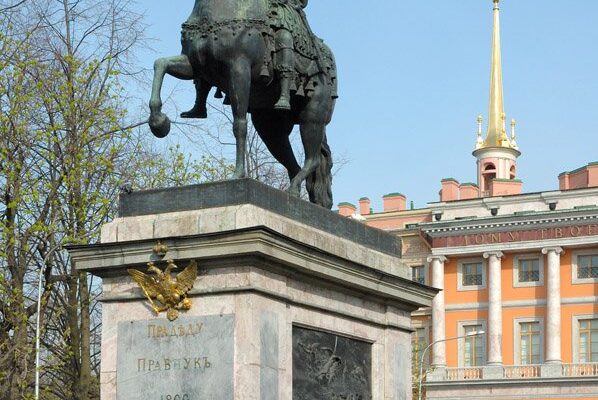Mikhailovsky Castle (Engineering)
Mikhailovsky Castle is a former imperial palace in St. Petersburg, outwardly resembling a Western European fortress palace. The castle owes its name to the church of Michael the Archangel, the patron saint of the House of Romanov, and to a quirk of Paul I, who took the title of Grand Master of the Order of Malta, to call all his palaces “castles”; the second name, “Engineering”, came from the Main Engineering School, which had been located there since 1819.
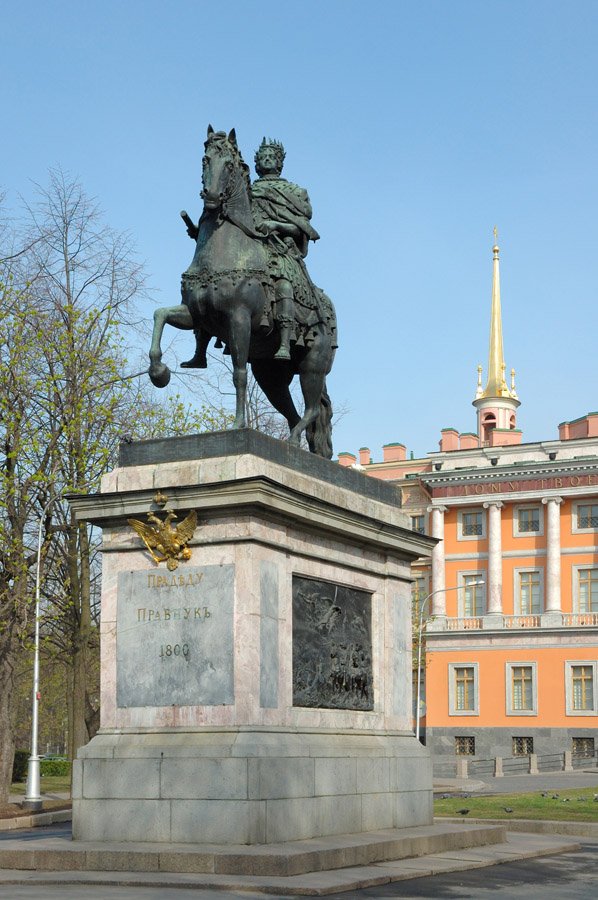
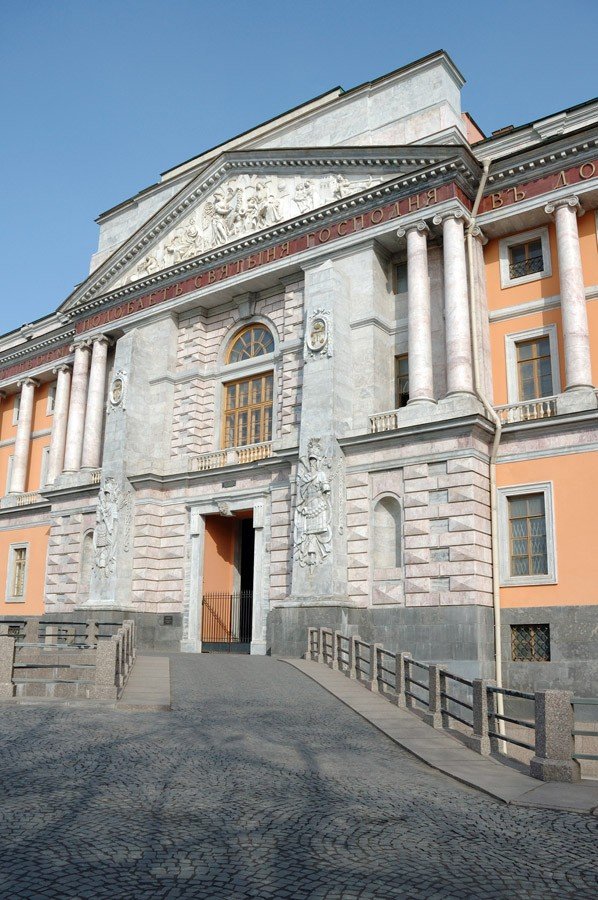
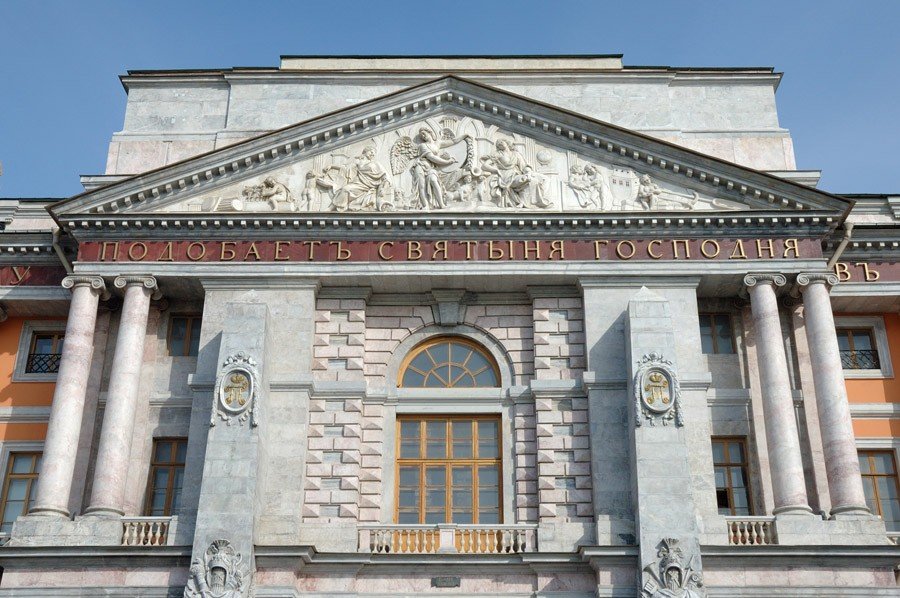
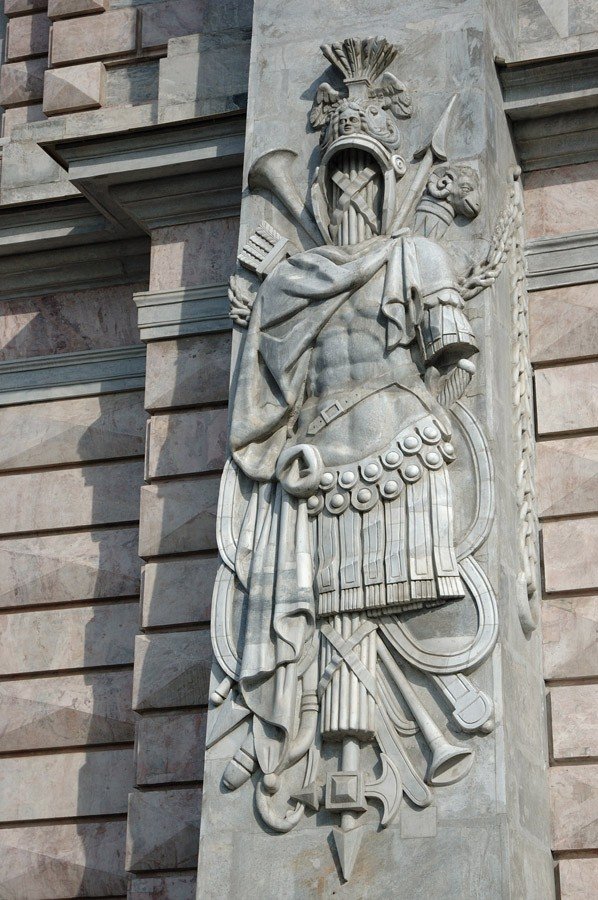
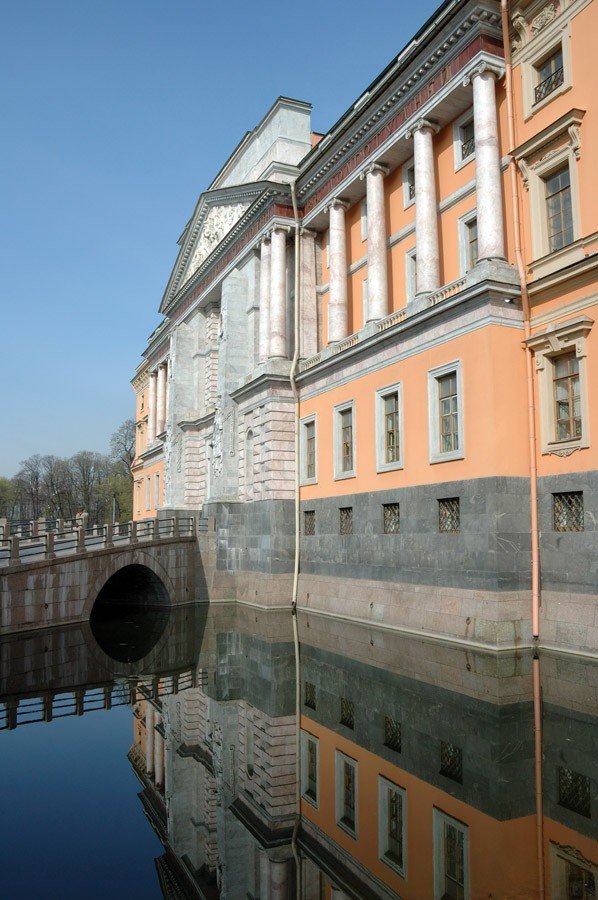
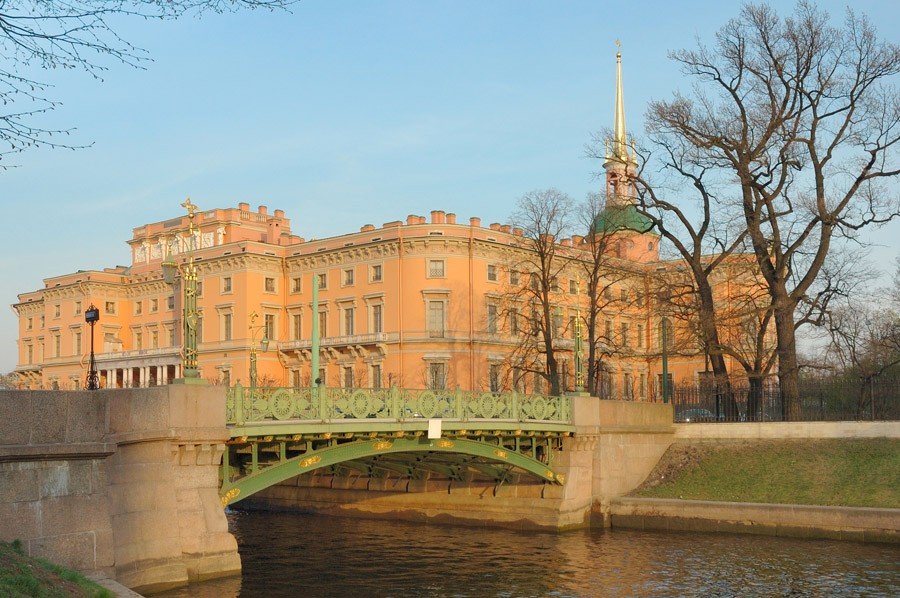
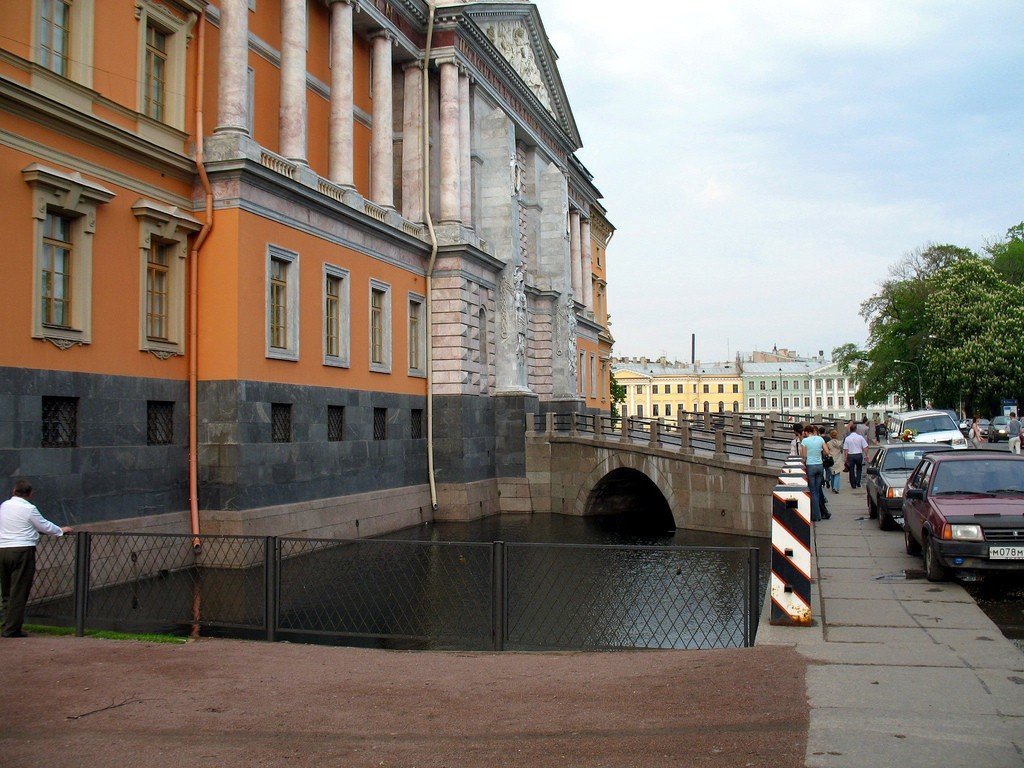
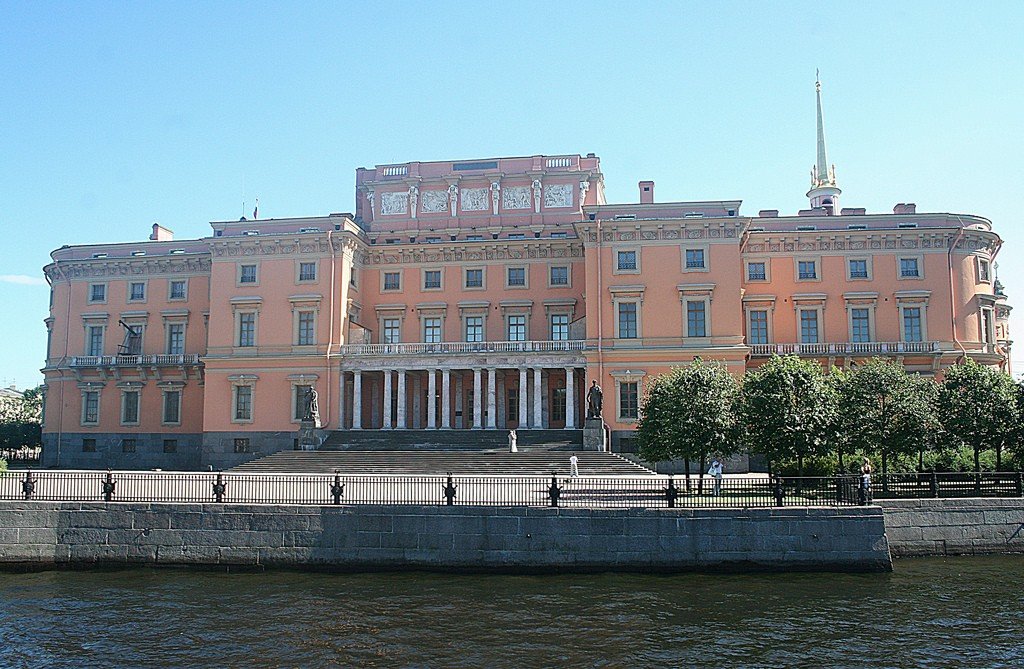
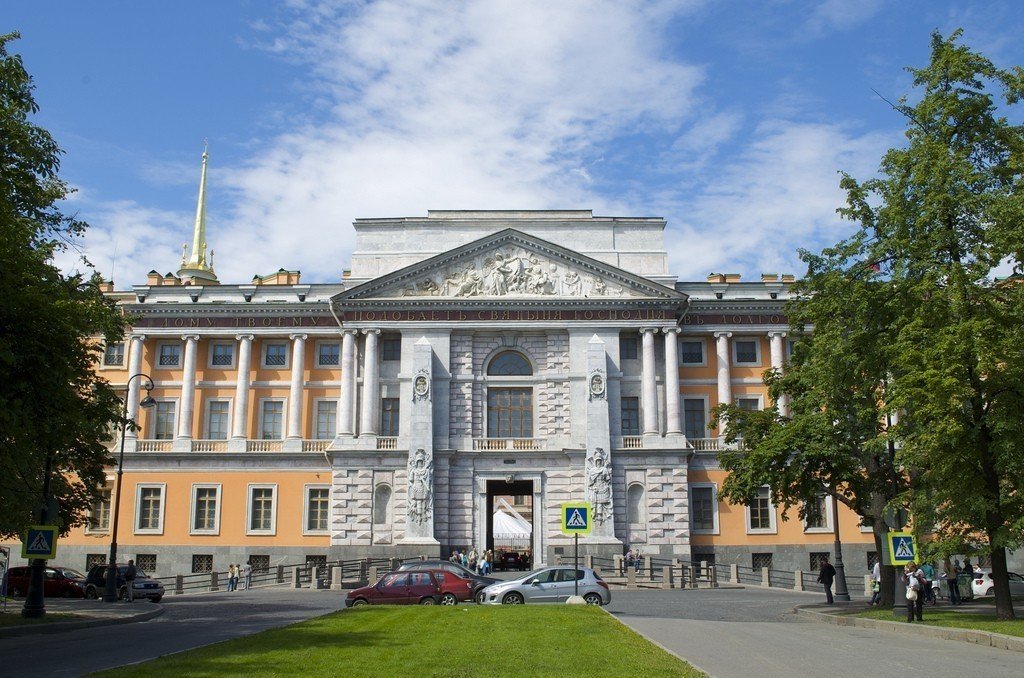
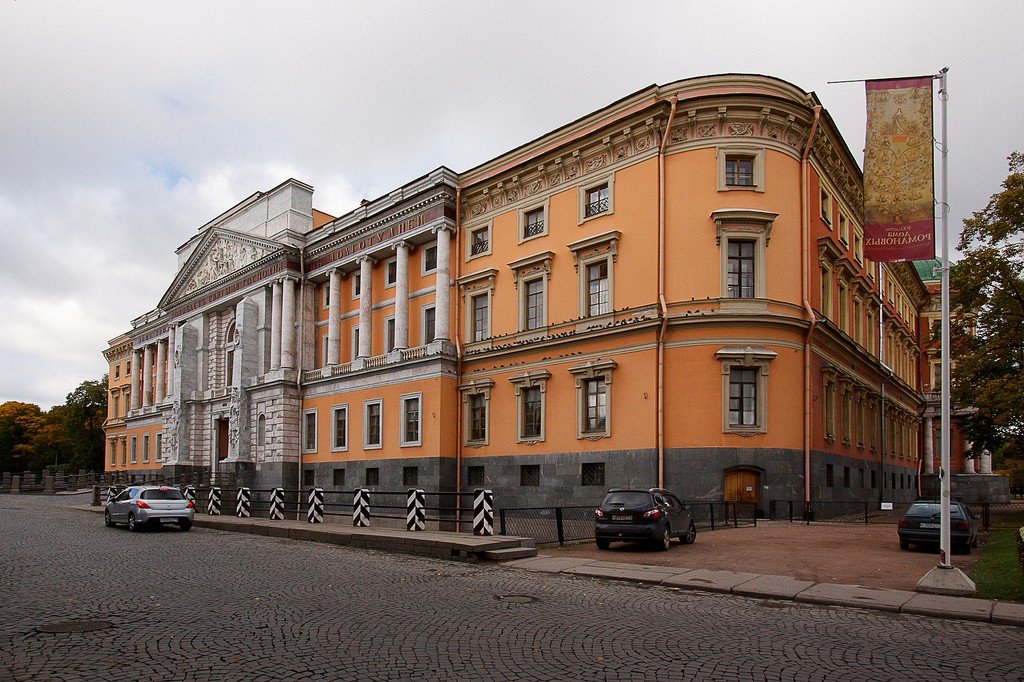
General information
When the building was handed over to the State Russian Museum in 1991, it was restored. Under Paul I, the enfilade of ceremonial galleries located along the perimeter of the inner courtyard (the Hall of Antics, Raphael Gallery, Laocoon Gallery, Arabesque Gallery) was filled with first-class works of art. After the restoration, the halls of the Mikhailovsky Castle were also filled with paintings and sculptures, but in a different way. The exhibitions “Portrait Gallery of Russian Historical Figures”, “Antique Subjects in Russian Art”, “The Renaissance Era and the Work of Russian Artists”, “The History of the Castle and its Inhabitants” were organized here. A variety of temporary art exhibitions are held here.
.Once upon a time, on the site of Mikhailovsky Castle there was a wooden Summer Palace of Empress Elizabeth, where Paul was born – the son of the future Empress Catherine II, and then still the wife of the heir to the throne. Paul did not like his mother Catherine, considered her a murderer of his father, illegally usurped power, and she responded to him distrust. The very way of her reign was unbearable for Paul. When finally the Empress died and Paul came to power, he did not want to live in her residence (Winter Palace) and ordered to build himself a new one.
.
According to legend, Paul, who was prone to mysticism, once said that he wanted to die where he was born, so this place was chosen for the construction. At the request of the emperor, who saw a threat everywhere, his new palace was built as a securely fortified fortress surrounded on all sides by moats with lifting bridges. In St. Petersburg it is traditionally called a castle. It was named Mikhailovsky in honor of the Archangel Michael, whom the emperor considered his heavenly patron.
.
Unusual for St. Petersburg, the appearance and structure of St. Michael’s Castle determined the chivalric ideals and character traits of Paul I, who saw conspiracies and treason everywhere. The disputes about the author of the castle project are still going on. According to one version, the project of Vasily Bazhenov (the author of the Pashkov house in Moscow) was taken as a basis, according to another – Vincenzo Brenna, and according to a third – the idea belonged to Paul himself, very accurately reflected in the appearance of the building restless nature of the royal romantic. In any case, the project was realized by the Italian Brenna, who performed the function of not so much an architect as a foreman.
.
It was the most expensive and most hurried construction of the XVIII century. The castle was erected for 4 years, and it cost 6.5 million rubles in gold. At the same time, materials for the construction of marble Rinaldievsky St. Isaac’s Church, Catherine’s estate in Pella, the Tauride Palace. The work was carried out with great haste, several thousand people worked here day and night – Paul was in a hurry to get behind the secure walls. Finally, in early February 1801, the impatient owner with his numerous family moved into the castle, which had not yet been dried out and almost unheated.
The new royal residence, surrounded by rivers and specially dug canals with lifting bridges, carefully guarded by soldiers, seemed impregnable. But fate played a cruel joke with the Emperor Paul – just forty days after moving in, he was brutally murdered by conspirators in his bedchamber. Dissatisfied with his tumultuous reign Guard officers beat the unfortunate to death. The prediction of one of the town’s hedonists came true, who foretold that the tsar would live as many years as the number of letters in the inscription above the castle gates: “To your house befits the sanctity of the Lord in the length of days”. Letters here 47 – at this age the emperor and died.
.
Let’s look closely at the castle. Does it not reek of some severity and mystery? Its entire impregnable and mysterious appearance is imbued with the spirit of architectural romance. Each facade of the massive building looks different. From the side of Sadovaya Street you can see the palatial St. Michael’s Church crowned with a typical St. Petersburg spire. The northern facade faces the Moika with an open terrace supported by a marble colonnade and a wide staircase decorated with statues of Hercules and Flora. Emphasized monumental main southern facade with marble columns and sculpture. On its pediment is a bas-relief “History inscribes on its tablets the glory of Russia.”
.
There is still a legend in the city that as a model for the unusual for St. Petersburg reddish-pink color, in which the walls of the castle are painted, served as a glove dropped during the ball favorite of Paul Anna Lopukhina. “Udvortsa the name of the archangel and the colors of the mistress,” wrote the Saxon envoy Rosenzweig.
.
For almost twenty years after the violent death of the emperor, the castle was empty. Members of the royal family feared and avoided this ominous and mysterious structure. There were many rumors and mystical stories about Mikhailovsky Castle in the city. They spoke of bad omens that allegedly took place during its construction, passed from mouth to mouth the legend of the ghost of the murdered emperor appearing here at night. Not surprisingly, the castle remained abandoned for a long time, arousing curiosity and fear with its mysterious appearance.
.…The singer looks wistfully at the menacingly sleeping in the middle of the fog Deserted monument of the tyrant, the palace abandoned to oblivion… – Pushkin wrote about it. .Then the castle housed the Main Engineering School, hence its second name – Engineering. Here studied the future writer Dostoevsky, composer Cui, physiologist Sechenov, electrical engineer Yablochkov. After the revolution, the military engineering school continued to work in it, which was replaced by numerous offices and design bureaus. Finally, in the early 1990s, the castle was taken over by the Russian Museum, which still owns it. By the anniversary of the city, the building was restored, reconstructed and opened fragments of the Voskresensky Canal and the Three-span bridge – part of the fortifications surrounding the castle – preserved underground.
.
Let’s go into the inner courtyard of the castle. It has an unusual shape – octagonal, reminiscent of the octagonal Maltese star (Paul was grandmaster of the Order of the Knights of Malta). A few years ago a monument to the emperor was erected in the middle of the courtyard. If you wish, you can go inside the castle. There is now a museum – one of the branches of the Russian Museum. You can walk through the restored parade halls or see art exhibitions.
.In front of the main entrance to the castle is the Connetable Square arranged for parades with a monument to Peter the Great in the middle. This first Russian equestrian monument to Peter the Great was made by the sculptor Rastrelli in the 1740s, but it was not erected until 60 years later at the request of Paul I, who ordered a laconic inscription on its pedestal, “Great-grandfather to great-grandson”. The monument of the tsar, depicted as a Roman emperor on a mighty horse, was admired even by Lomonosov:
.This is the image of a wise hero,That, for the sake of his subjects, deprived himself of rest,took the last rank and served as king,
Pedestal
The pedestal of the monument is decorated with two bronze bas-reliefs, which depict the most important battles of the Northern War – “Poltava Battle” and “Battle of Gangut”. On both of them, angels float in the sky, extending a laurel wreath to Peter and trumpeting victory. Note the polished heel of one of the sailors on the bas-relief depicting the Battle of Gangut. It is believed that if you try to help him climb aboard, your wish is sure to come true.
.Visitors
- Address: Sadovaya Street, 2. M. “Gostiny /vor”, “Nevsky Prospekt” .
- Tel: 570-51-12. .
- Opening hours: open daily, except Tues, from 10.00 to 18.00, Mon to 17.00. .
- Inspection – 1-2h. .
- Entrance – 100 p., preferential – 50 p., schoolchildren – 30 p. For foreigners – 300 p., preferential -150 p. Photo – 250 p.
